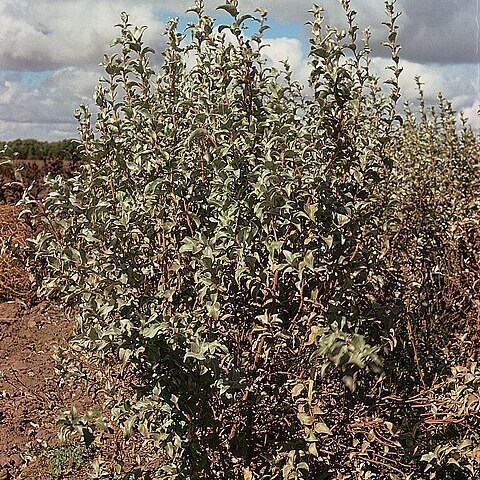Shrubs, sometimes climbing, or small trees, deciduous or evergreen, sometimes spiny. Leaves alternate, petiolate, blade margin usually entire. Flowers bisexual, clustered on short axillary shoots, sometimes solitary. Calyx tubular, 4-lobed, constricted above ovary and breaking at constriction as fruit develops; lobes usually spreading, deciduous, white or yellow inside. Stamens 4, inserted in mouth of calyx tube, alternate with lobes. Style linear, not exserted. Drupe globose or ellipsoid, rarely longitudinally winged (E. mollis); stone usually 8-ribbed, with a large straight embryo.
Woody climbers or shrubs; older stems usually armed with thorns derived from short shoots, lepidote. Leaves alternate, deciduous or persistent. Inflorescences axillary or pseudo-terminal. Flowers solitary or in cymes. Perianth 4-lobed, rarely 5–8-lobed. Stamens 4, rarely 8, alternitepalous; anthers versatile, introrse. Disc usually inconspicuous, intrastaminal. Stigma lateral. Fruit usually with 8 longitudinal ribs when dried; exocarp fleshy; mesocarp woody; endocarp villous or (not in Australia) glabrous inside.
Fls perfect or unisexual, in small lateral clusters on twigs of the current year; stamens 4, scarcely exsert; hypanthium tubular-turbinate above the globose, investing base, lobed not more than ca half-length, deciduous from the top of the developing fr; fr drupe-like, the persistent hypanthium-base rather dry and mealy, with a hard, bony, striate-fluted inner layer; lvs alternate. 45, Eurasia, N. Am.
Hermaphroditic or andromonoecious, deciduous or evergreen shrubs, sometimes spiny, prominently furnished with silvery or brown scales. Fls usually in fascicles, sometimes solitary, often fragrant. Calyx tube extending well beyond ovary; lobes 4, deciduous, white or yellow. Stamens 4; filaments very short. Fr. scaly, often edible; achene ellipsoid, striate.

